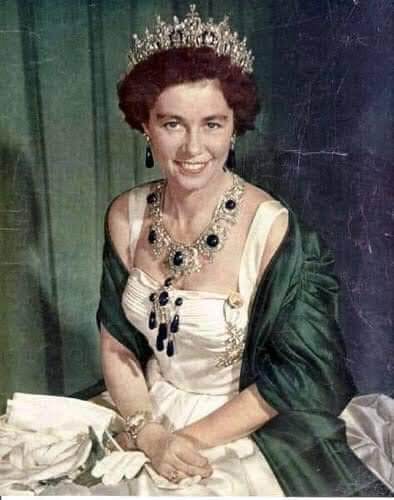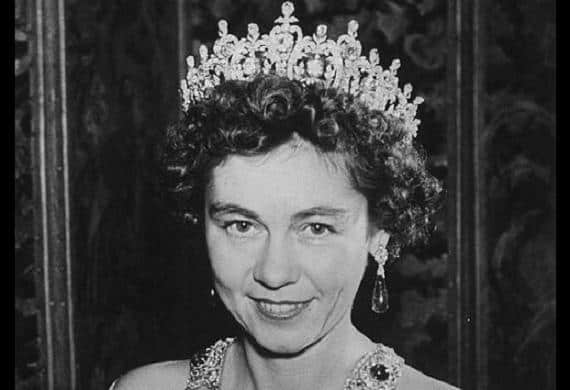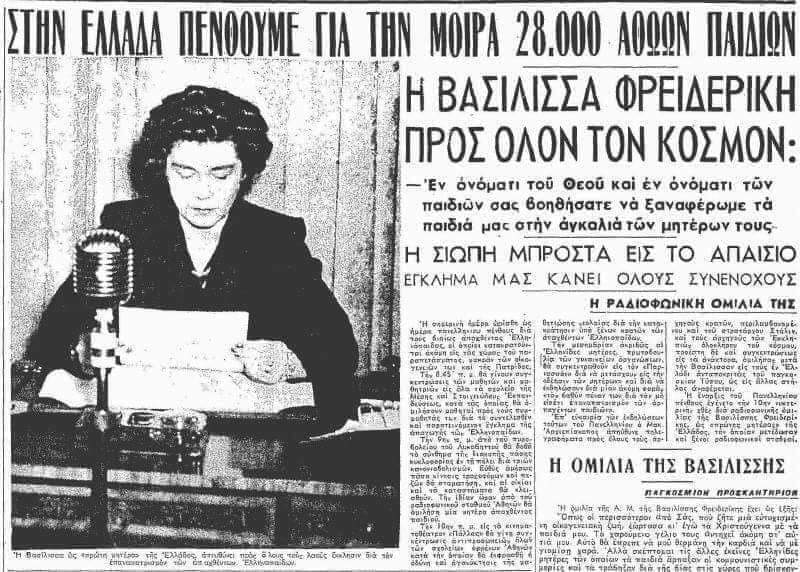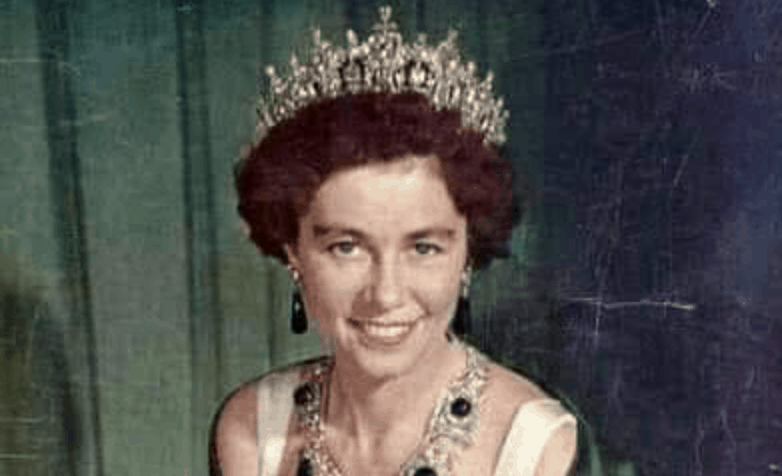On February 6, 1981, Queen Frederick, Queen of the Greeks during 1947-1964, thereafter Queen mother, passed away.

Queen Frederica of Greece
Friederike Luise Thyra Victoria Margarita Sophia Olga Cecilia Isabella Christa or Queen Frederica of Greece as she would later be known, was born on 18 April 1917.
The wedding of Frederica and Paul (the heir presumptive to the Greek throne) took place in Athens, Greece, on 9 January 1938 at the Metropolitan Cathedral of Athens. They resided after marriage in the suburbs of Athens in a Villa in Psychiko.
Ten months after their wedding, their first child, Princess Sophia (later Queen Sofía of Spain) was born in Tatoi Palace in Athens on 2 November 1938.
Less than two years later, their second child, Prince Constantine (later King Constantine II of Greece) was born on 2 June 1940 in Psychiko Palace.
Frederica and Paul’s third and final child, Princess Irene, was born on 11 May 1942 in Cape Town, South Africa, where the family was in exile during the Second World War.
In February 1944, the family was exiled to Egypt until the Greek people, by referendum, chose to put King George II of Greece (Frederica’s brother-in-law) back on the throne.
Exactly seven months after the referendum vote, King George II died in 1948, and Paul ascended the throne as King Paul I – making Frederica the Queen Consort of Greece.
The Greek Civil War during this time caused instability and other issues, and the King and Queen toured the northern section of Greece to attempt to unite the country.
It was also during the Civil War that the Queen, who had converted to Greek Orthodoxy, set up Queen’s Camps/Child’s Cities for orphaned and impoverished children who were provided shelter, food and other necessities.
At the Greek Civil War’s end in 1949, Their Majesties went on several trips to Italy, West Germany, the United Kingdom, and the United States.
World War Two and the Holocaust caused many problems for those royals who supported the Third Reich or had family members who did.

Queen Frederica was an example as her grandfather was the last Kaiser and had brothers who served in the SS (the German protection squad that gathered the Jews to send them off to the concentration camps).
Her relationship to Germany and to people who supported Hitler was used against her by left-wing members of the Greek government.
Also used against her was the fact that she had been part of the League of German Girls – a branch of the Hitler Youth – during her childhood; however, supporters jumped to her defence citing that it would have been almost impossible to not be part of the organisation in Nazi Germany at the time.
Queen Frederica did not help matters with Greek politicians with her meddling into politics in undemocratic ways and did not hide her political viewpoints (which were staunchly anti-communist). She even campaigned against the election of the Prime Minister of Greece at the time, Alexander Papagos.
Less than twenty years into his reign, King Paul died on 6 March 1964 from stomach cancer. Paul and Frederica’s son, Constantine then ascended the throne – but not for long as the monarchy was abolished less than ten years later.
Frederica stepped back from official duties after Constantine had wed in 1964, giving Greece’s new queen time to climb in the spotlight. From that point on, she only attended royal family events. However, the opposition accused her of being the real decision-maker behind the throne and not her son. The monarchy was abolished in 1973, and the Greek Royal Family left the country for a life in exile once again.
Her time in exile was spent in Rome, London and Spain (the latter being where her daughter Sofía resided), and it was on holiday in Madrid that she passed away during an eye surgery from heart failure on 6 February 1981.
Queen Frederica was only 63-years-old. She was buried in the Greek Royal Family’s burial ground at Tatoi Palace in Greece beside her husband, and the Greek government allowed her family to attend the funeral and burial but required them to leave immediately after it was over.


